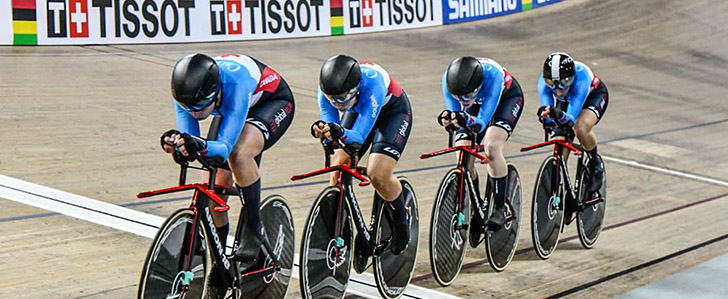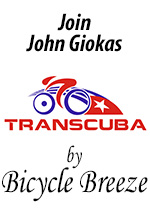July 27/06 11:25 am - Landis Positive in A Sample Test
Posted by Editor on 07/27/06
Landis A Sample Positive
Team Phonak has confirmed that Tour de France winner Floyd Landis has returned a positive result in the A sample from his win On stage 17. Stage 17 was the one where he made his incredible comeback after losing 8 minutes the day before. An announcement was made yesterday that a top rider had tested positive, and speculation began to center on Landis after he pulled out of two post-Tour criteriums, foregoing lucrative appearance fees.
Today the Phonak team confirmed the result in a statement:
"The Phonak Cycling Team was notified yesterday by the UCI about an unusual level of Testosterone/Epitestosterone ratio in the test made on Floyd Landis after stage 17 of the Tour de France. The team management and the rider were both totally surprised of this physiological result.
"The rider will ask in the upcoming days for the counter analysis to prove either that this result is coming from a natural process or that this is resulting from a mistake in the confirmation. In application of the Pro Tour Ethical Code, the rider will not race anymore until this problem is totally clear.
"If the result of the B sample analysis confirms the result of the A sample, the rider will be dismissed and will then pass the corresponding endocrinological examinations."
The Phonak team website (as well as that of the title sponsor, Phonak Hearing Services) are currently unavailable.
The UCI released the following statement:
"The UCI received today a report of the anti-doping laboratory of Paris stating an adverse analytical finding following an anti-doping test carried out at the Tour de France 2006.
"As foreseen by the World Anti-doping Code and the UCI Anti-doping Rules, the team of the rider, its National Federation, its national anti-doping organisation and the World Anti-Doping Agency have been immediately informed.
"The adverse analytical finding received this morning relates to the first analysis, and will have to be confirmed either by a counter analysis required by the rider, or by the fact that the rider renounces to that counter analysis.
"The World Anti-doping Code and the Anti-doping Rules of the UCI do not allow to make the name of the concerned rider public, as well as other information that may allow its identification until the end of the results management provided by the Anti-doping Rules of the UCI as well as the World Anti-doping Code."
It should be noted that this positive is for the A sample only. The B sample still must be tested and, depending upon the results of the B sample test, the positive will be dismissed (B sample is negative) or upheld (B sample positive) and sanctions applied. The most obvious sanction is that Landis will lose the Tour win, elevating Oscar Pereiro (Caisse d'Epargne-Illes Balears) back into Yellow.
It should also be noted that the A sample tested positive for Testosterone, a more controversial substance to test for (than, for example EPO), since it is naturally occurring and the UCI has previously recognized that certain riders do have naturally occurring higher levels than the deemed positive threshold level.
Testosterone and Epitestosterone are tested for by looking for testosterone precursors in urine samples. The most famous sporting example is probably baseball player Mark McGwire, who used androstenedione and creatine while overtaking the 37-year-old home run record of Roger Maris. At the time, these substances were not banned by Major League Baseball. Another testosterone precursor tested for (and banned) is dehydroepiandrosterone (DHEA). A review of scientific literature on testosterone precursors by Robert Johnson can be found at http://www.clinchem.org/cgi/content/full/45/2/163.
WADA has published guidelines for testing for Testosterone and Epitestosterone - PDF document - and states that:
"Reference ranges of the various parameters of the urinary steroid profile have been described for populations of both males and females. It should be borne in mind that there is significant variation between individuals . A normal level for one individual may in another be elevated and be consistent with doping. The Laboratory will adapt its testing procedures to the Sample tested; for example, female or male, Asian or Caucasian (when the information is provided). The concentration of urinary steroids such as testosterone and epitestosterone varies greatly between individuals and also depends upon the specific gravity of the urine Sample; only values corrected for a specific gravity value of 1.020 can be compared.
"It is recommended that a urine Sample in which any one of the following criteria is met during the Screening Procedure, be routinely submitted to the IRMS analysis:
i) T/E value equal or greater than 4;
ii) concentration of testosterone or epitestosterone (equivalent to the glucuronide) greater than 200 ng/mL1;
iii) concentration of androsterone or etiocholanolone (equivalent to the glucuronide) greater than 10,000 ng/mL;
iv) concentration of DHEA (equivalent to the glucuronide) greater than 100 ng/mL."
The testing of the B sample requires that Landis and/or his manager/lawyer/etc. be present, so it will likely be another day or two before the results of the B test are known.
| Return to Canadian Cyclist homepage | Back to Top |





